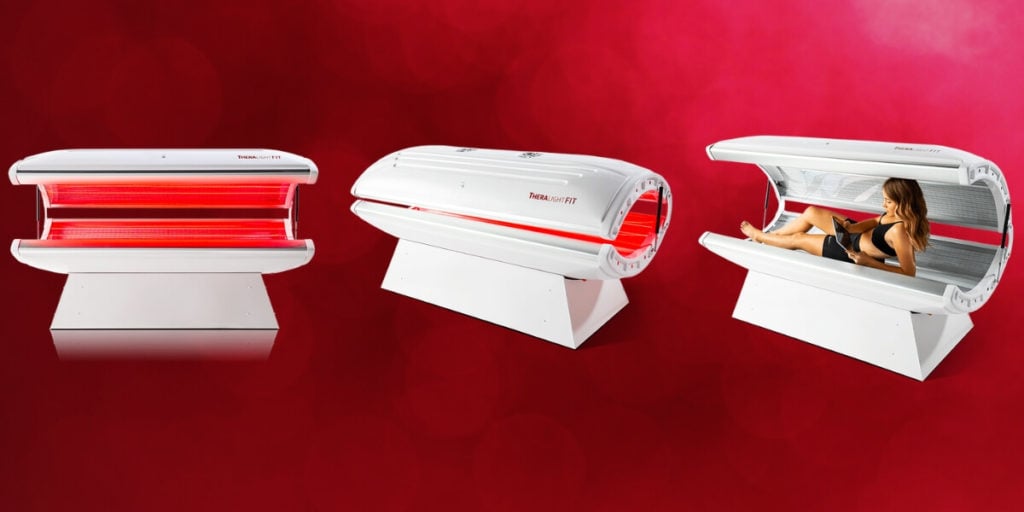A Guide to Red Light Therapy Devices
Red light therapy is revolutionizing how healthcare practitioners and wellness professionals provide treatment. Now, technology is expanding the ways they deliver red light therapy.
Many red light therapy devices are available these days, including full-body red light therapy beds, targeted therapy devices, and laser therapy devices. Each device has a different design that can help patients reach various goals. Understanding the various red light therapy devices and their uses can help providers choose the right devices to achieve their patients’ goals.
All red light therapy devices work on a principle known as photobiomodulation, which uses the energy of light waves to trigger therapeutic changes in body cells. Photobiomodulation therapy (PBMT) stimulates blood flow, improves cells’ utilization of oxygen, and removes free radicals. PBMT alleviates pain, reduces inflammation, promotes healing and sleep, and provides other health benefits, such as preventing injuries and treating acne and wrinkles. No side effects are associated with PBMT, and it can be combined with other therapies.
PMBT devices emit low levels of visible or near-infrared light that, depending on the wavelength of light emitted, penetrates the skin and the tissues below. The various red light therapy devices emit this light in different ways. Some blanket the entire body with therapeutic light wavelengths, while others offer targeted therapy.
Types of Red Light Therapy Devices
Full-body red light therapy beds
A full-body red light therapy bed provides maximum exposure to the healing energy of photobiomodulation to the patient’s entire body. The highest quality units combine the four optimal therapeutic wavelengths to provide systemic results. These wavelengths include:
- 633nm red light
- 810nm near-infrared light
- 850nm near-infrared light
- 940nm near-infrared light
Providers can customize treatments with various operation modes, such as Continuous Wave (CW) mode and Pulsed Mode (10-5000 Hz).
Red light therapy beds also offer other benefits in the form of unattended treatments along with increased outcomes and profitability without having to increase time, cost and staffing.
What to expect with a full-body red light therapy bed
The patient lies comfortably in the bed for a full-body treatment. Direct exposure of the skin to the therapeutic light maximizes the effects of treatment, so males should wear shorts, and females should wear a sports bra and shorts during a full-body treatment. Patients should wear protective eyewear during treatment.
The treatment provider uses a remote device to turn the device on, set the treatment protocols, and set the timer. Each treatment lasts between 3 and 15 minutes. When the lights are on, the patient feels comfortably warm but not hot. Full-body red light therapy is very relaxing.
PBMT has a vasodilation effect, which widens blood and lymphatic vessels to temporarily increase circulation.
Most patients do not experience any side effects. Many patients enjoy the immediate benefits of PBMT — they feel less pain, experience less swelling, report improved mood, and say they sleep better even after one treatment.
Repeat treatments help patients realize their desired health goals. Session length and treatment protocols vary based on the patient’s goals.
Therapeutic benefits of a full body red light therapy bed
Full-body red light therapy produces systemic benefits, such as improved sleep and blood circulation. It may also produce faster results than targeted or laser therapy because it introduces more healing wavelengths to the treatment area.
Targeted red light therapy
Targeted red light therapy, such as red light face masks, uses smaller devices to concentrate the therapeutic light on specific areas of the body. These devices are typically portable or handheld. Despite their smaller size and portability, the devices deliver all the therapeutic wavelengths of light needed for effective treatments and optimal outcomes.
What to expect with targeted red light therapy
During targeted red light therapy, the patient sits or lies comfortably while the provider passes a handheld device over the treatment area. The light must shine directly on clean, bare skin for best results.
Therapeutic uses for targeted red light therapy
Targeted red light therapy is highly effective in skincare applications, like that provided by dermatologists, estheticians, and beauty/skin rejuvenation professionals. Targeted red light therapy can also alleviate joint pain, help manage inflammation in injured or diseased tissue, and improve healing outcomes.
Regardless of the type of device, it is imperative to purchase and use a device registered with the FDA. The federal administration is responsible for protecting public health by ensuring the products are safe, effective, and secure for use.

